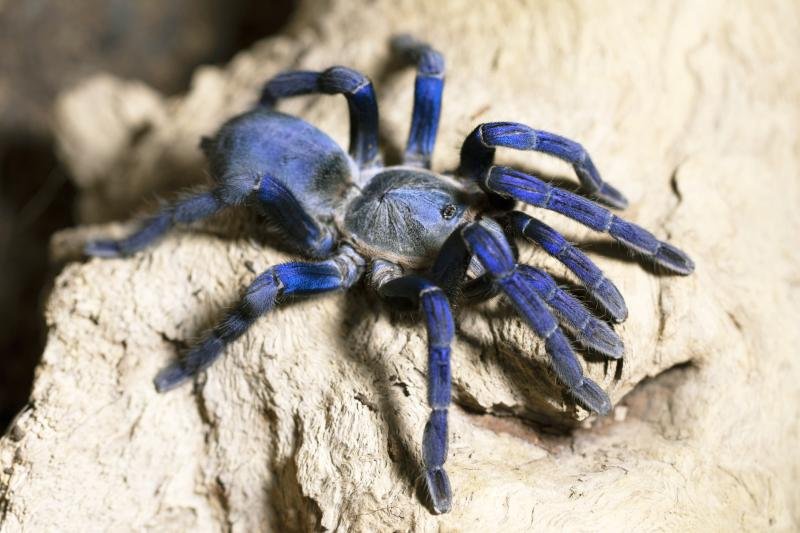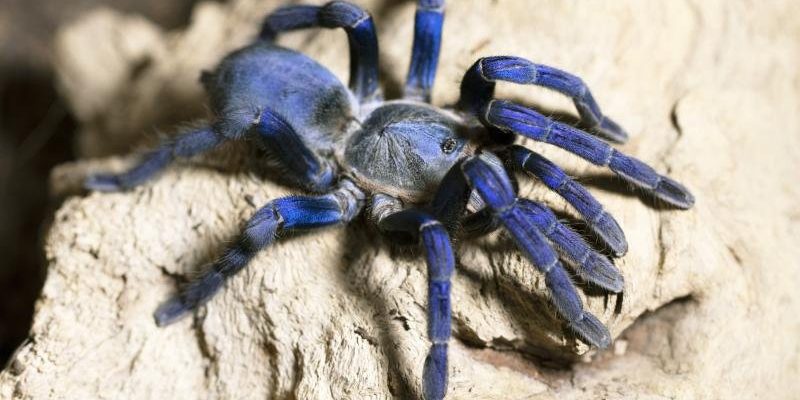
Cobalt blue tarantulas are native to Africa, where they thrive in the wild. However, keeping one as a pet means recreating its natural environment and providing the right care. Picture your pet as a special guest who needs everything just right to feel comfortable—temperature, humidity, and even a cozy hideout. Don’t worry; I’ll walk you through everything you need to know to be a great tarantula parent.
Understanding the Cobalt Blue Tarantula
The cobalt blue tarantula, scientifically known as *Haplopelma lividum*, is a striking species that can catch anyone’s eye. Their vibrant coloration, which ranges from deep blue to iridescent shades, makes them one of the most sought-after tarantulas among enthusiasts. You might be wondering why they’re so special. Besides their beauty, these spiders are also known for their fascinating burrowing behavior. In the wild, they dig intricate tunnels to hide and hunt, showcasing their natural instincts.
However, they do have a reputation for being a bit skittish. Unlike some tarantulas that are content to socialize with their humans, cobalt blue tarantulas prefer a more solitary life. They’re often more defensive than other species, so handling them isn’t usually recommended for beginners. The best pet experience comes from observing and appreciating their unique behaviors, rather than trying to interact with them directly.
Setting Up the Perfect Habitat
Creating a comfortable habitat is crucial for your cobalt blue tarantula. Imagine setting up a cozy hotel room that has everything your guest needs! These spiders thrive in a terrarium that mimics their natural environment. Here’s what you need:
- Terrarium Size: A 10-gallon tank is generally sufficient, but bigger is always better—especially because these spiders do love to dig.
- Substrate: Use a mix of coconut fiber or peat moss that’s at least 4 inches deep. This allows your tarantula to burrow and feel secure.
- Temperature & Humidity: Aim for 75-85°F (24-29°C) and keep humidity levels around 70%. Use a thermometer and hygrometer to monitor conditions.
- Hiding Spots: Include plenty of hides like cork bark or commercially available tarantula hides. This gives your pet a safe space to retreat when it feels stressed.
By providing the right habitat, you ensure your cobalt blue tarantula feels safe and secure—just like a traveler with a great hotel room!
Feeding Your Cobalt Blue Tarantula
Feeding your tarantula might seem daunting at first, but it’s not much different than feeding a cat or dog—just with a few more legs and less fur! Cobalt blue tarantulas eat a diet primarily based on live insects. Here’s how to set up their meals:
1. Food Choices: Crickets and roaches are excellent options. You can also offer mealworms or waxworms, but be careful not to overfeed. It’s like giving them treats—too much can lead to health issues!
2. Feeding Frequency: Young tarantulas should be fed every few days, while adults can be fed weekly. Pay attention to their growth and appetite; you’ll quickly get a feel for what they like.
3. Water: Although they get moisture from their food, it’s a good idea to provide a shallow water dish for hydration. Just make sure it’s not too deep to prevent drowning.
Remember, watching your tarantula hunt is one of the most fascinating parts of being a tarantula owner. It’s a bit like watching a nature documentary right in your living room!
Handling and Behavior
Now, you might be curious about handling your cobalt blue tarantula. Here’s the thing: while some spiders are open to handling, cobalt blues are known to be more defensive and skittish. If you’re a beginner, it’s best to limit direct handling. Instead, enjoy observing them in their habitat.
If you do decide to handle your tarantula (maybe to clean the enclosure or move it), here are some tips:
– Use a Container: Instead of using your hands, gently coax your tarantula into a small container or cup. This minimizes stress and lowers the risk of accidental bites.
– Stay Calm: Your tarantula can sense your energy. Stay relaxed and move slowly to avoid startling it.
– Respect Their Space: If your tarantula shows signs of stress—like rearing up or trying to escape—give it some space. It’s okay; they’re not social butterflies!
Remember, the beauty of having a cobalt blue tarantula is in admiring their natural behaviors rather than trying to cuddle them.
Common Health Issues and Troubleshooting
Every pet comes with its share of concerns, and cobalt blue tarantulas are no different. Here are some common health issues and how to tackle them:
– Molt Issues: Tarantulas molt regularly, shedding their exoskeletons to grow. If your spider seems sluggish or isn’t eating, it might be preparing to molt. Ensure the humidity is high during this time to aid the process.
– Signs of Stress: If your tarantula is spending too much time hiding or showing defensive behaviors, check its habitat conditions. Stress can often stem from inadequate hiding spots or improper temperature.
– Environmental Changes: Sudden changes in temperature or humidity can lead to health problems. Stick to your setup and monitor it regularly, much like checking the thermostat at home.
Staying attentive to your tarantula’s needs will help prevent many issues, and it’s all part of being a responsible pet owner.
Keeping a cobalt blue tarantula can be a rewarding experience! With their breathtaking colors and unique behaviors, they can bring a dash of excitement to your home. By providing the right habitat, feeding them well, and respecting their natural instincts, you can create a thriving environment for your eight-legged friend. Just remember, it’s all about observation, care, and a bit of patience. So grab a cup of coffee, sit back, and enjoy the fascinating world of your cobalt blue tarantula!

